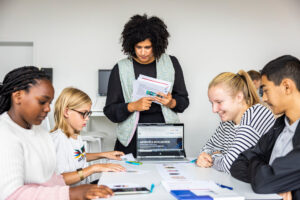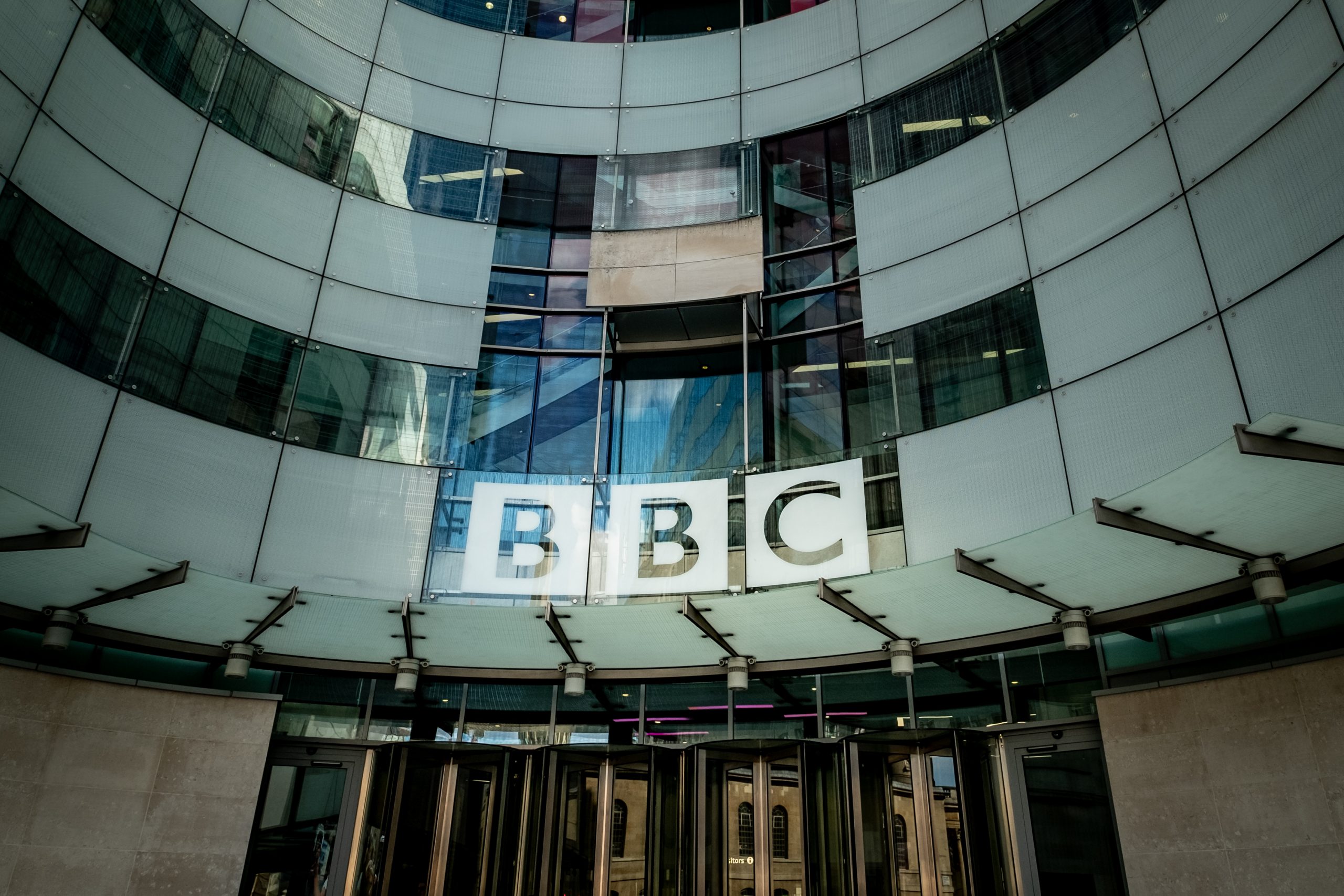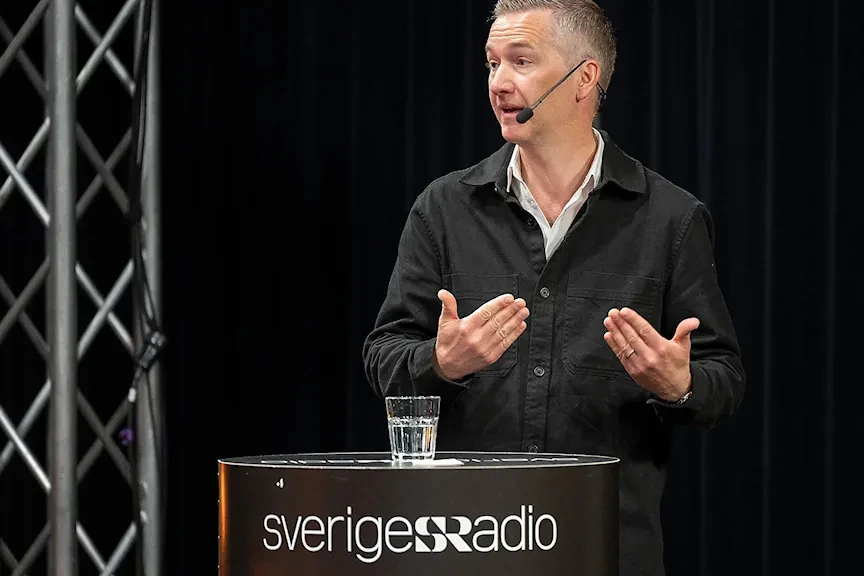INSIGHT
VRT: Embracing AI for the public good
8th December 2023
The Head of the Innovation Development at VRT, Tatjana Vandenplas, explains the directives the Flemish broadcaster has established to guide use of generative AI, plus shares some examples of where it is already being employed.

By Tatjana Vandenplas, Head of Innovation Development at VRT
AI is changing today’s world significantly, whether you are open to it or not. And this change is taking place in every sector. But instead of focusing only on the risks of this emerging technology, we aim to embrace it early on. At the Flemish public broadcaster, VRT, we have taken several steps to integrate AI into our current workflows, while drafting a policy that outlines how we should use it (and how not).
Defining AI in media
The rise of AI is both an opportunity and a necessity. AI and media no longer operate as separate fields but are merging. Generative AI makes the creation of media a democratic process: technologies that were only accessible to professionals are now within reach for others. As a public broadcaster, we must build on this evolution and look to the future. More powerful AI-models can offer support in terms of efficiency, creativity, and accessibility.
Explore: PSM & Generative AI – what are broadcasters doing?
Of course, there is a distinction in AI in the form of automation and generative AI. AI is already part of various roadmaps and workflows today. This concerns automating repetitive tasks, such as adding metadata to programmes. Often, technologies have already been validated and there is still much to be gained in applying these tools correctly.
So why is generative AI so special? Because it is more accessible than any predecessor and can be used immediately. It is more disruptive and will define our future landscape. It helps us broaden our creativity and create new ways to brainstorm, experiment and bring ideas to life. In fact, we already see generative AI being deployed in work processes today, so the two forms are already intertwined.
It is vital that we make AI tangible for the media maker and user. Then, they themselves can come up with possible solutions or ideas that can enhance their media experience. It always starts with the users and engaging them early on.
From community to arena
The risks concerning AI are well known. This is why we work on an AI policy in line with our public mission: “[VRT is] independent, trustworthy and maintains the highest standards of impartiality, professional ethics and integrity”. This is being translated into guidelines and tools, in close collaboration with our data protection officer. The standard is high, which is necessary for a public broadcaster.
As a public broadcaster, VRT uses AI to enable innovation and create value in a responsible way. The end goal is to enrich the lives and society of our users, in line with our public service values and our legal and regulatory obligations. We ensure that we control and manage the risks around AI as much as possible. At a public broadcaster, we have so much more opportunities to get creative with data and artificial intelligence, since the return of investment goes a lot further than financial gain.
Listen toour podcast
Uncovering and exploring the biggest
issues facing public media
In terms of integrating AI in our work, we have a defined AI-governance , existing of three pillars:
- AI community: We inform, inspire, and train our colleagues via hackathons, workshops, tutorials etc.
- AI chapter: We create a central workflow to keep an overview on the opportunities and developments within different media workflows.
- AI arena: We set up targeted experiments, ‘arena’s, around AI applications.
With these steps, VRT will be able to create value through AI in:
- Supporting the creation and publication of content by making it more efficient,
- Creating (elements of) content in which images, voices and audiovisual content are automatically created,
- Automating supporting processes
Today’s AI-cases at VRT
(Re)creating content
AI helps media creators work faster and more efficiently, whether writing text, editing images and videos, or customising content for a specific channel. Meanwhile, several AI applications exist that can convert speech into text and suggest words to improve the readability of an article. This frees up more time for creativity.

VRT is taking full advantage of these opportunities. For instance, our news department is working on a prototype that can easily create automatic summaries based on a news article written by a journalist. Here, AI helps translate original content into derivative, short formats, even in an adapted style. What is important here is that editorial, and especially human, control always happens at the end of the process. AI provides support but does not replace a human’s expertise and experience.
Besides creating content, AI also helps to create new stories with existing content. AI can smoothly transcribe a lot of video material, recognise faces and text for custom captions, and also split programmes into chapters. That way, reporters or journalists can quickly find a particular clip and create a video montage based on text.
Strengthening accessibility
AI makes it possible to process a lot of data for a specific purpose, from accessibility to disinformation. And from optimisation to personalisation. AI voices are getting better and better today, meeting different media needs, such as making content accessible to people with a visual impairment or better guiding users through an online offering. VRT investigated what the possibilities were with existing VRT ‘voices’. With VRT’s gigantic audio archive, we can train AI to clone voices, based on written-out text. In Flemish, the technology lags a bit behind English, but it is good enough to set up experiments. This is the same for speech recognition. By joining forces with other partners in various innovation projects, we can speed up this process and use AI efficiently for automatic subtitling.
A force in factchecking

Finally, AI helps us monitor the quality and especially the reliability of content, even though AI can lead to the creation of fake news and spreading disinformation. Our VRT NWS ‘check’ editors are trained to recognise and debunk the use of AI in images. Besides this traditional way of fact-checking, they also use AI-applications to distinguish what is real and what is fake. VRT also conveys that knowledge to the public. With EDUbox‘s interactive teaching packages, for example, young people can learn in a playful way what AI is and what the technology can do. At the same time, they also learn to look critically at the active role AI plays in everyday life.
As a public broadcaster, VRT uses AI to enable innovation and create value in a responsible way. The end goal is to enrich the lives and society of our users, in line with our public service values and our legal and regulatory obligations.
Encouraging the use of AI
For each technology, we work out scenarios that help make the possibilities more concrete. We look at potential applications that can solve problems and add value. For example, we keep a close eye on how major players are using AI. This can help us identify quick wins, such as exploring existing services like Adobe Express and Firefly. It is vital that we make AI tangible for the media maker and user. Then, they themselves can come up with possible solutions or ideas that can enhance their media experience. It always starts with the users and engaging them early on.
It is key to remember: AI cannot replace people. People can only be replaced by people who can work with AI. Instead of just adopting AI technologies, it is important to invest time and resources to understand the nuances, capabilities, and limitations of AI. AI by itself will not solve all problems. But a knowledgeable person, supported by AI tools, can address many of these problems.

About the author
Tatiana Vandenplas is the Head of Innovation Development at VRT.
Our thanks to Ms. Vandenplas for providing this report.



